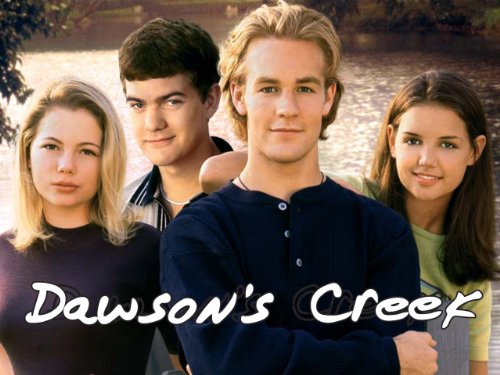Introduction:
“Dawson’s Creek,” a coming-of-age teen drama that premiered in 1998, quickly became a cultural touchstone, capturing the essence of adolescence and the complexities of growing up. Created by Kevin Williamson, the series unfolded in the fictional town of Capeside, Massachusetts, and followed the lives, friendships, and romantic entanglements of four main characters: Dawson Leery, Joey Potter, Pacey Witter, and Jen Lindley. This comprehensive exploration delves into the intricacies of “Dawson’s Creek,” tracing its evolution, impact, and enduring legacy.
Table of Contents:
- The Inception of “Dawson’s Creek”:
- a. Kevin Williamson’s Vision for the Series
- b. Pitching and Development of the Show
- c. Debuting on The WB Network in 1998
- Premiere and Early Seasons:
- a. Initial Reception and Viewer Response
- b. Evolution of Storylines and Character Dynamics
- c. The Unique Tone and Style of the Show
- Plot Synopsis and Character Dynamics:
- a. The Central Premise of the Show
- b. Introduction of the Main Characters
- c. Exploring Themes of Friendship, Love, and Identity
- The Complexities of Teenage Relationships:
- a. Love Triangles and Romantic Entanglements
- b. The Dawson-Joey-Pacey Dynamic
- c. Jen Lindley’s Impact on the Group
- Small-Town Setting and Coming-of-Age Realism:
- a. The Charm of Capeside, Massachusetts
- b. Realistic Portrayal of Adolescence
- c. Tackling Social Issues Through Teen Perspectives
- Character Evolution and Personal Growth:
- a. Dawson Leery’s Filmmaking Ambitions
- b. Joey Potter’s Journey from Girl Next Door to Independent Woman
- c. Pacey Witter’s Transformation from Class Clown to Maturity
- d. Jen Lindley’s Exploration of Identity and Self-Discovery
- Comic Relief and Emotional Depth:
- a. Humor as a Coping Mechanism for Teenagers
- b. Emotional Moments and Impactful Storylines
- c. The Impact of the Show’s Soundtrack on Emotional Resonance
- Behind-the-Scenes Dynamics:
- a. Relationships Among the Cast and Crew
- b. Challenges and Triumphs During Production
- c. Guest Appearances and Directorial Debuts
- Critical Acclaim and Audience Reception:
- a. Viewer Demographics and Ratings
- b. Awards and Nominations Received
- c. Cultural Impact on Teen Dramas and Popular Culture
- Exploring Social and Cultural Issues:
- a. Addressing Sexuality, Family Dynamics, and Friendship
- b. Controversial Storylines and Viewer Reactions
- c. “Dawson’s Creek” as a Conversation Starter
- Navigating the Transition to College:
- a. The Impact of Graduation on Storylines
- b. College Years and New Beginnings
- c. Maintaining the Core Dynamics Amidst Change
- Legacy and Syndication:
- a. Life Beyond the Original Airing
- b. Cultural References in Other Media
- c. The Show’s Influence on Teen Dramas and Coming-of-Age Narratives
- Reunion and Anniversary Celebrations:
- a. Cast Reunions and Specials
- b. The Impact of Social Media in Reconnecting Fans
- c. The Enduring Love for “Dawson’s Creek”
- Fan Community and Online Presence:
- a. Online Fandom and Social Media Engagement
- b. Virtual Rewatches and Fan Theories
- c. The Role of Fan Communities in Sustaining the Legacy
- Conclusion: The Everlasting Impact of “Dawson’s Creek”:
- a. Reflecting on the Enduring Legacy
- b. Lessons Learned and Fond Memories
- c. “Dawson’s Creek” as a Timeless Classic in Teen Television
In this comprehensive exploration, we celebrate the indelible mark left by “Dawson’s Creek,” a series that not only defined an era but also resonates with audiences across generations. From its humble beginnings to the complexities of teenage life and the enduring bonds of friendship, “Dawson’s Creek” continues to navigate the turbulent waters of adolescence, leaving an enduring legacy in the realm of coming-of-age television.









